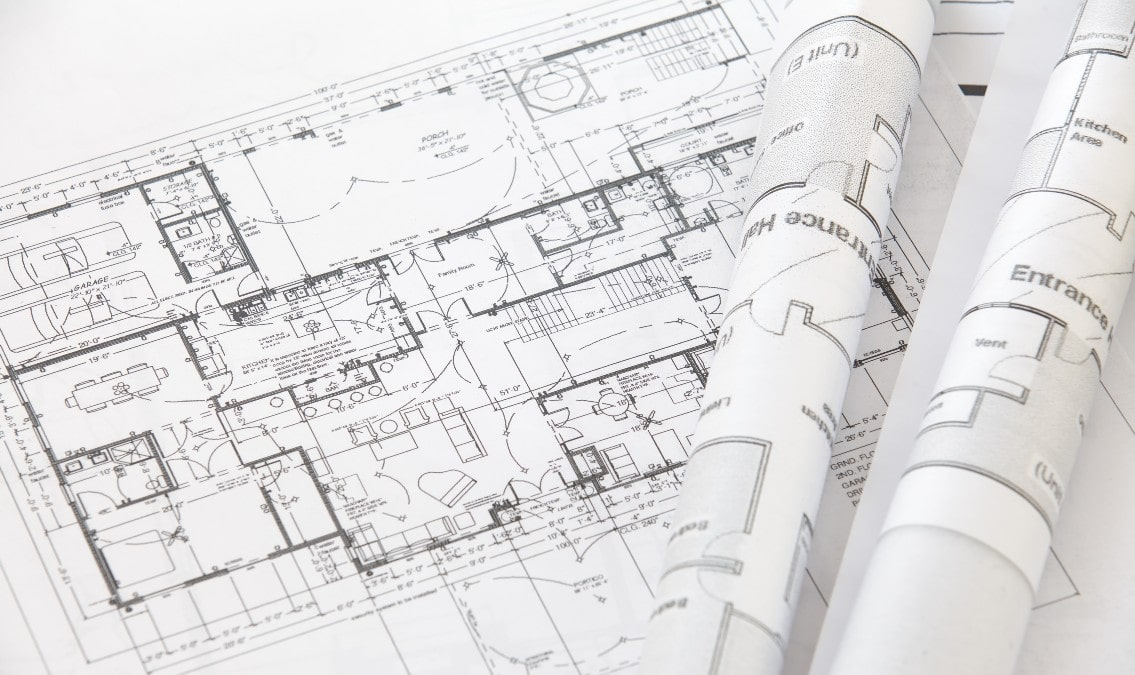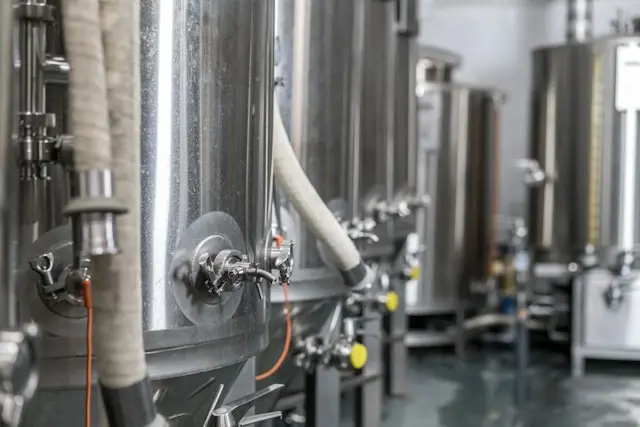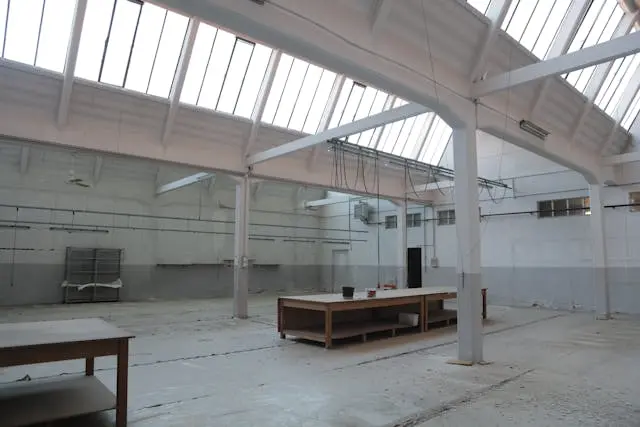The Complete Guide to Strategic Facility Planning


Strategic facility planning (SFP) is an essential part of modern work, especially for teams that work in-office. Remote and hybrid work is revolutionizing the way businesses operate, too, and it’s never been more important for organizations to define their physical workspaces.
In fact, approximately 60% of companies follow a hybrid work model, while 20% of companies operate fully remotely.
Whether you need to plan for flexible work arrangements for your office workers or you need to do better space planning in your manufacturing facilities, SFP helps you make the most of what you have.
In this guide, we’ll explain how strategic facility planning works, why it’s so beneficial, and how durable labels and tags play a crucial role in any strategic facility plan.

Strategic facility planning is a process that analyzes your company’s physical locations, such as office buildings or factories, to make the best use of your working environments. The goal of strategic facility planning is to optimize operational efficiency while designing facilities that can handle future changes.
Space planning is an important part of your strategic facility plan, but SFP is about much more than space management.
Strategic facility planning assesses past, present, and potential future needs, putting your company in a proactive instead of a reactive position. It’s a dynamic, ongoing process that focuses on how your facilities can best support your employees and business goals.
This depends on your organization, but more often than not, a facility manager or a management team handles all facility needs.
Creating and implementing a strategic facility plan is complex, so it requires a lot of collaboration between decision-makers. Having an in-house facility manager who specializes in facility management could make the planning process more efficient.
The facility manager relies on software to better understand their facilities. With access to valuable data, an in-house facilities manager makes informed decisions that benefit the company as a whole. Plus, having a facility manager ensures your employees have the resources they need to perform their jobs successfully.
While hiring a dedicated facility manager is the best route, small businesses might not have the resources to do this. In this case, you may need to outsource strategic facility planning to a specialized third party.
They might not have specialized insider knowledge, but these consulting firms will help you create an effective plan to better use your space.

Physical spaces are a big investment. Businesses that take the time to invest in strategic facility planning reap so many benefits. Effective SFP offers advantages ranging from employee engagement to sustainability.
If you have a big operation with several facilities, it’s hard getting ahead on maintenance tasks and facility management.
Without the guidance of the strategic facility plan, it’s easy to get caught up in the daily demands of running all your facilities, but reacting only to urgent matters leaves you with little time to plan for the future. This reactive approach can leave your organization unprepared for change.
Strategic facility planning forces your organization to think ahead and plan for the unexpected. Instead of taking a reactive approach, you have the luxury of looking ahead and planning your next move.
It’s never been more important for your company to align its workspaces with its business goals. Creating a strategic facility plan helps you maximize the value of office space and factory square footage, all while accommodating growth.
SFP ensures your facilities contribute to the bottom line and provide a strong return on investment. With the right software in your corner, it’s easy to track all expenses associated with running these facilities. With better visibility into your spending, it’s much easier to cut costs and optimize value.
Strategic facility planning also makes your use of space more efficient. This can improve production times, reduce labor costs, and increase your overall output—everything you need to increase ROI.
It’s difficult to grow your business if you don’t have a strategy for optimizing your current (and future) space. However, when you invest in strategic facility planning, you have a much better idea of what it will take to get your business to your desired future state. That leads to simplified scaling without the growing pains.
SFP can also make your business more attractive to potential employees in a competitive labor market. Implementing a strategic facility plan allows a company to analyze what’s working and what improvements need to be made. This creates a more desirable work environment, which in turn helps you retain and attract quality employees.
Unplanned or poorly planned spaces have an impact on the people in those spaces. For example, a factory with cramped hallways or storage lockers could create bottlenecks that limit your workers’ productivity.
Instead of increasing their work targets, rethink the physical space to support your teams’ needs.
Strategic facility planning designs the space to work with your team and workflows, not against them. With the right strategy, your facility workflows will improve, downtime will decrease, and productivity will increase.
Plus, your employees will probably enjoy their jobs much more, which helps with both morale and retention.
More businesses are aware of their environmental footprint. Strategic facility planning helps you find a balance between sustainability and operating in a cost-effective manner.
For example, an SFP program can identify areas where you’re inefficient or wasteful. That’s bad for both your budget and the environment.
SFP can also support sustainability by:
By implementing a strategic facility plan, you can create greener facilities while increasing revenue.

While you should always create a strategic facility plan tailored to the nuances of your business, it’s also helpful to have a playbook. Follow these five steps to create and execute a flawless strategic facility plan.
First, have a thorough understanding of your vision, mission, and goals. Why is it important for you to manage your physical space? How does the physical space support your mission or goals?
During this step, invite every member of the management team to offer their thoughts for a well-rounded perspective. Understand the underlying reasons behind your facilities before you make a plan. This will help you design a plan that actually generates results for your business.
Understand how much you’re currently using your resources before you optimize your facilities. Look at how you use facilities right now, as well as how you used them in the past.
How can you make this more efficient? How can you reduce waste? Highlight ways to make these existing facilities more useful before you invest in more space or move to a different space.
Next, identify your current and future real estate needs. A good strategic facility plan looks at your company’s data and goals to determine how much and what type of space you need to improve operations.
Facility managers need to know whether the business is growing or downsizing, how quickly changes may happen, and how to accommodate those changes.
This is where you try to determine what might happen in the future. Forecast supply and demand and identify facility strategies that can help you meet that demand.
If you have facility planning software, use it to perform a gap analysis to highlight your needs.
Now that you’ve identified gaps, it’s time to document an actionable plan that accounts for these gaps.
You’re free to create a plan that’s all your own, and the IFMA Strategic Facility Planning white paper can provide an excellent starting point. Use the IFMA process and scenario models to help you implement a strategic facility plan for your business.
This isn’t necessarily about predicting the future, but giving yourself an idea of what your business might need based on logical assumptions and detailed analyses.
To learn more about creating a facilities management strategy, check out the video below:
The more thoughtful and methodical the strategic planning process, the easier it will be for your team to put the facility plan into action. The best way to implement your plan is to use facility management software that integrates with your existing workplace management system.
As you roll out the new facility plan, your software should continue to gather real-time facility data, employee feedback, and financial reports. Using this data, the software can help you determine whether the strategic facility plan is in line with your business goals or if you need to make adjustments.
Remember, spaces and processes change over time. You should treat your SFP as a living document that changes dynamically over time. Consider revisiting the SFP at least once a year to make it as relevant and useful as possible.

SFP software needs a lot of data to make helpful, actionable suggestions. Durable labels and tags can help your team gather this data more efficiently to better manage facilities. Labels and tags play an important role in effective strategic facility planning, helping with everything from asset tracking to space planning.
Every organization needs to track assets like machinery, equipment, tools, and office supplies within its facilities. Camcode’s labels and tags make it easy to scan, identify, and track assets throughout your building. They also make it possible to create a digital paper trail for everything from your team’s computers to field equipment.
Maintenance and repair history is critical for strategic facility planning. With the right tags and labels, your team can quickly update asset logs in the SFP software. Over time, this gives you a better understanding of how to schedule facility maintenance while preventing downtime.
Labels and tags are important for strategic facility planning because they outline safety measures and ensure compliance. This increases workplace safety and helps you avoid costly penalties.
Modern work is becoming more complex, but strategic facility planning gives business leaders more control over their facilities. When you align your business goals with your current and future facility needs, you can better prepare your organization for inevitable change.
While strategic facility planning software is a must, your business also needs the right hardware to manage its facilities. Use durable labels and tags to track assets, monitor maintenance, and keep your team safe.
See how quality labels and tags can support your organization’s strategic facility plan. Request a free Camcode label pack today to see how our labels work in your facility.

Strategic planning is important because it ensures that the operation of your facilities matches your business goals. A well-planned facility can:
Businesses can develop a strategic facility plan by:
At a minimum, businesses should review their strategic facility plans once a year. However, your business might need to check the plan more regularly, especially if you plan to change your business model or make other big changes.
Our sales engineers are experts in automatic asset tracking, tagging and identification,a nd can answer all your questions. Get in touch now.
Lets Talk ›Enter your information and get a free checklist of the top questions to answer to plan a successful asset tagging project for any maintenance tracking or facility management system.